Hello. I’ve been lurking for a while trying to figure out how to best operate my Dutch West (VC) 2461. I’m about to give up on it. I need to know if it’s just me? Or is this stove just junk?
The stove came with the house when we bought the place in 2016. I’m guessing by some of the paperwork and owners manual I found that the stove was installed around 1997, the year after the house was put in (manufactured home). This is the first stove I’ve had in my adult life, I grew up with one but we didn’t use it as a primary heat source. I took the stove apart to inspect it and clean it. I ended up replacing the catalyst (it was gunked up and in pieces), refractory (it was in pieces), and all of the seals in the doors and the top. It worked “okay” for a bit and I attributed my struggles with the stove to not knowing how to use the cat. Because it hasn’t been much fun I’ve only used it during power outages or if it’s really dang cold. Until last winter I started using it part time to heat the house. This winter my plan was to use it full time. It’s not going well. We had a couple of ok weeks, I feel like it is too small to heat my 2000 sq ft house. Then it started having a hard time keeping a good draft. Then it started backpoofing. It’s currently torn apart in pieces and I’m trying to figure out where the problem is. The cat looks nearly new but the outside of it has some red discoloration on it. Does that indicate it’s been over fired? We must have gotten a bird inside the stove this spring because the refractory was torn up in little bits in some places but I have one on order. I’m in the process of replacing the door seals again, it feels like they should have lasted longer. The fan didn’t work when we moved in, I didn’t think that was a big deal but shopping for one now and I’m not sure I few like spending that much money on one for this particular stove.
We are burning well seasoned elm because that’s what we have available. I’m not sure how long my flue/chimney run is but when we first moved in I measured it and from doing some reading I remember it was “appropriate”. Ive finally mastered reading the temperatures in the cat probe, side door, and flue thermometers. I feel like I have a handle on managing the cat and air flow. I really feel like it’s an undersized hunk of junk and I’m debating on shopping for a new stove next spring/summer. I just want to make sure I’m not missing something. Is it the stove? Or is it me?
The stove came with the house when we bought the place in 2016. I’m guessing by some of the paperwork and owners manual I found that the stove was installed around 1997, the year after the house was put in (manufactured home). This is the first stove I’ve had in my adult life, I grew up with one but we didn’t use it as a primary heat source. I took the stove apart to inspect it and clean it. I ended up replacing the catalyst (it was gunked up and in pieces), refractory (it was in pieces), and all of the seals in the doors and the top. It worked “okay” for a bit and I attributed my struggles with the stove to not knowing how to use the cat. Because it hasn’t been much fun I’ve only used it during power outages or if it’s really dang cold. Until last winter I started using it part time to heat the house. This winter my plan was to use it full time. It’s not going well. We had a couple of ok weeks, I feel like it is too small to heat my 2000 sq ft house. Then it started having a hard time keeping a good draft. Then it started backpoofing. It’s currently torn apart in pieces and I’m trying to figure out where the problem is. The cat looks nearly new but the outside of it has some red discoloration on it. Does that indicate it’s been over fired? We must have gotten a bird inside the stove this spring because the refractory was torn up in little bits in some places but I have one on order. I’m in the process of replacing the door seals again, it feels like they should have lasted longer. The fan didn’t work when we moved in, I didn’t think that was a big deal but shopping for one now and I’m not sure I few like spending that much money on one for this particular stove.
We are burning well seasoned elm because that’s what we have available. I’m not sure how long my flue/chimney run is but when we first moved in I measured it and from doing some reading I remember it was “appropriate”. Ive finally mastered reading the temperatures in the cat probe, side door, and flue thermometers. I feel like I have a handle on managing the cat and air flow. I really feel like it’s an undersized hunk of junk and I’m debating on shopping for a new stove next spring/summer. I just want to make sure I’m not missing something. Is it the stove? Or is it me?


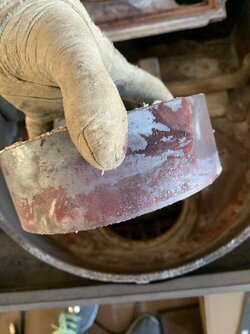
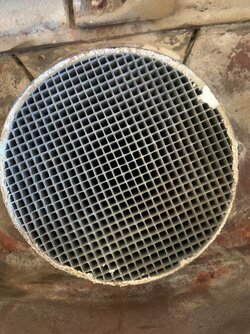
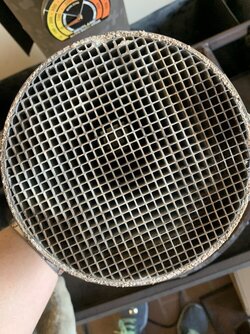
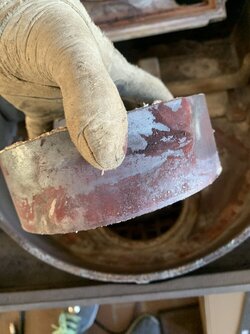
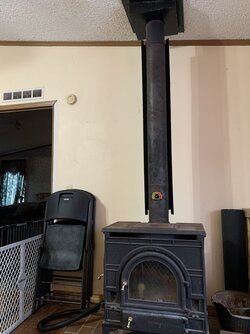
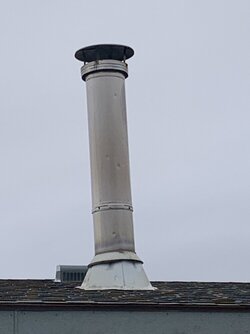
 !
!